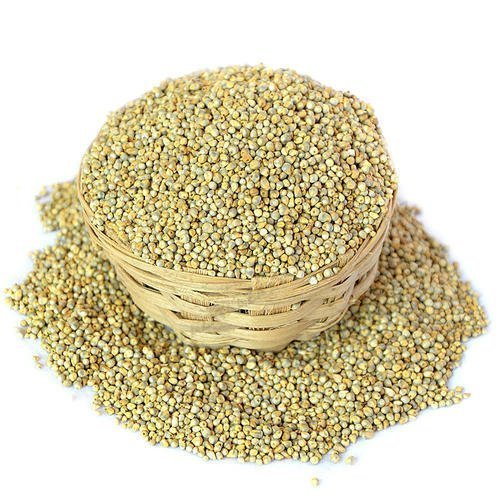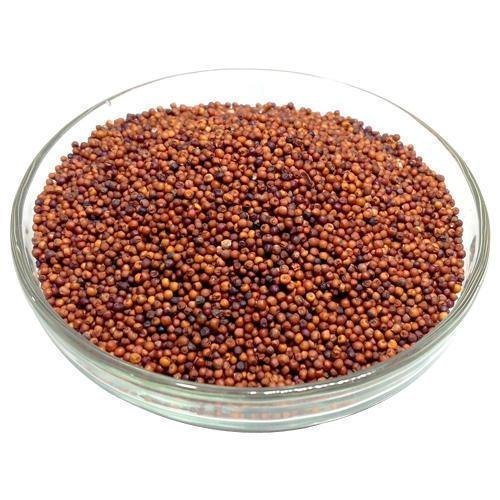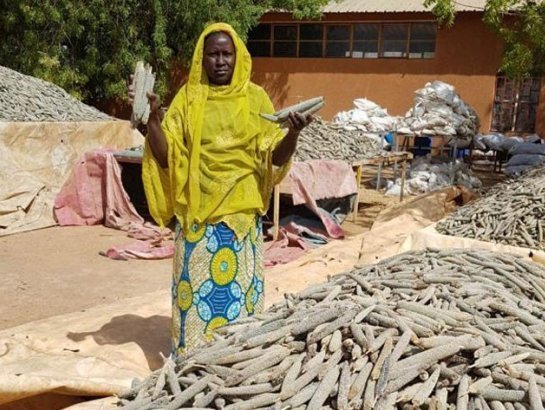Millet In Africa: Everything You Need to Know (Plus a Millet Recipe)
Table of Contents
You’ve probably heard about Millet in Africa.
How famous it is, its benefits, and maybe why it’s still grown to date.
But there’s more to that.
Millets are small-grained cereals from the grass family grown in most parts of Asia and Africa.
And it’s no secret that a ton of people is getting obsessed with millet because of its benefits.
In this post, you’re going to find everything you need to know about Millet in Africa – from its origin to how you can cook it.
Let’s get started.
Overview of Millet in Africa

According to most findings, the cultivation of millet in Africa began in West Africa.
By 3500, the cultivation of millet had reached Birimi (West Africa) and Dhar Tichitt in Mauritania.
The most common type of Millet in Africa is pearl millet, which can be traced back to 2500 BCE in Mali.
Types of Millet in Africa
There are two main types of millets grown in Africa – pearl millet and finger millet. These two originated from Sub-Saharan Africa.
Pearl originated from the drylands of West Africa while finger millet from the subhumid uplands of East Africa.
Pearl and finger millets are global because they can grow in different geographical areas.
That said, pearl millet and finger millet are the two millet crops that have attracted the attention of many across the world.
Pearl Millet

You may not know why pearl millet has gained popularity in many parts of the world, but here’s why.
Pearl millet is considered the 6th most important cereal in the world. This is because it acts as food security as well as an income source for most small scale farmers.
Also, pearl millet offers a ton of nutritional components like phosphorous, protein, fiber, iron, and magnesium to the body.
Sadly, pearl millet hasn’t got the scientific and political attention it deserves because the farmers mostly grow it from the marginalized areas.
However, pearl millet is highly resistant to drought and can grow in drylands and semi-arid ecosystems throughout Sub-Saharan Africa.
Finger Millet

Finger millet grows in the uplands and sub-humid areas. Unlike pearl, finger millet adapts to wetter and colder climates.
Finger millet is an essential crop in Central and East Africa because of its high protein value.
And because of its protein quality, finger millet is a crucial complement to foods like plantains and cassava.
Like pearl millet, finger millet is neglected. In fact, research has shown that its cultivation is declining in most countries.
Frequently Asked Questions About Millet
Because millet is a highly sort after cereal, a ton of people can’t stop asking questions about it. Below are the most frequently asked questions about Millet:
1. What is Millet Used for In Africa?
Millet is valued in Africa because of its nutritional values. It is used as food, fuel, and feed like Florence.
Additionally, studies show that pearl millet can be used to control diabetes.
This is because of the fiber content in pearl millet, which digests slowly while releasing glucose at slower rates as compared to other foods.
2. Where is Millet Grown In Africa?
As I said, pearl millet and finger millet are the most common millets grown in Sub-Saharan Africa.
Pearl millet is mostly grown in West Africa (especially in Mali) while finger millet is cultivated in East Africa (Uganda and Tanzania) and Southern Africa.
3. Where is Millet Grown Today?
While millet was first grown in the Asian regions, its cultivation has spread across the world.
Today, foxtail millet is found in Eastern Asia, Proso millet in the Soviet Union, Western Europe, India, and Mainland China.
In the United States, foxtail millet and proso millet are grown in Nebraska, the Dakotas, and Colorado.
4. Is Millet a Grain or Seed?
This is what has left a ton of people confused. Many people can’t tell whether millet is a seed or grain.
Because of its grain-like consistency, most people mistake millet to be a grain, but the reality is that millet is a seed.

5. Is Millet Gluten-Free?
You guessed it right. Millet is gluten-free, but only in its natural state.
However, it’s wise to be watchful with grains because many grains have a higher risk of getting contaminated from gluten-containing wheat.
Millet Cooking – What You Need to Know
At this point, I’m assuming you’re well-conversant with millet.
But you still don’t have an idea of how you can cook millet.
We are going to center our focus on the most frequently asked questions about millet cooking in this section.
Then in our next section (millet recipes), we will walk you through how to cook millet.
Okay, can we get rolling?
1. How Long Does it Take to Cook Millet?
Cooking time for millet may vary, depending on what you’re using to cook it. Cooking Millet will take you approximately ten minutes if you follow all the procedures right.
2. Should Millet be Soaked Before Cooking?
Most people believe that you should soak millet before cooking, but there shouldn’t be any restrictions on that. You can cook millet without soaking.
However, if you choose to soak your millet before cooking, make sure you have soaked it for at least six hours.
3. Is it Safe to Eat millet?
This will depend on a lot of factors. But if we base our argument on its nutritional value, then yes, you should eat millet every day.
Millet is rich in fiber, which is diegetically accepted and proved to be generally good for health.
Millet Recipes: How You Should Cook Millet
Finally! We are in the last part – to walk you through the millet recipes.
In this section, we are going to use an example, which shouldn’t affect your outcome, though.
So let’s dive in:
Your Millet Recipe
We will use a fluffy and light millet as an example.
So here we go:
- Use the ratio of one part of dried millet to two parts water
- Before you add water to the millet, make sure you have toasted it over medium heat until fragrant
- Once it’s toasted, pour water and enough pinch of salt
- Heat the water and make sure you have reduced the heat, then cover your pot
- It should take between 15 to 17 minutes for the water to be absorbed
- While it may be tempting to open your lid to check if your millet is ready, please don’t. This is because it’s not right for the steam to escape when cooking millet.
- If you’d want a creamier millet similar to mashed potatoes, add more water and frequently stir when cooking
- Creamy Millet is an alternative for oatmeal. Also, it can be dressed up with butter and fresh herbs, then served.
Wrap Up
In the beginning, you wanted to know more about Millet in Africa.
You now have a better understanding of millet in Africa, and best of all is that you can now cook millet on your own.
It’s now your turn. Put what you have learned into practice and let me know how your millet tasted with the recipe we gave you.
Nice cooking.
More Recipes 8 High-Protein Millet Recipes You Will Love
Sorghum is also one of the millet varieties grown in Africa click the link below to find recipes.
The Awesome Ancient Grain Sorghum And Gluten-Free Vegan Recipes
Visit also > The Millet Diet – The Millet Revolution is here…




